| Professional charting tools for .Net developers |
Introducing SharpPlot
Your First Chart
Recent Updates
Tutorials
General Tutorials
Chart Tutorials
Reference
SharpPlot Class
Properties
Methods
Structures
Enumerations
Style examples
Glossaries
Active Charts
VectorMath Class
DBUtil Class
Get SharpPlot
Download SharpPlot
Buying SharpPlot
SharpPlot Support
Upgrading from GraPL
Release notes
Home > Sample Charts > Histogram > Overlayed Normal Curve
Overlayed Normal Curve
The Histogram does one very simple job – it takes a large sample of values and shows how they are grouped. Many samples of data turn out to follow a bell-shaped curve called the Normal distribution, but often the shape of the plot gives some useful clues which can be hidden simply by looking at statistics such as the Mean or Range.
The final example draws a theoretical bellcurve centred on the mean. In this case (the data is the sum of 3 dice throws) we confidently expect a Normal distribution. For many datasets, it will be necessary to compute a more complex theoretical curve and overlay it with a call to LineGraph as an indepentent secondary chart.
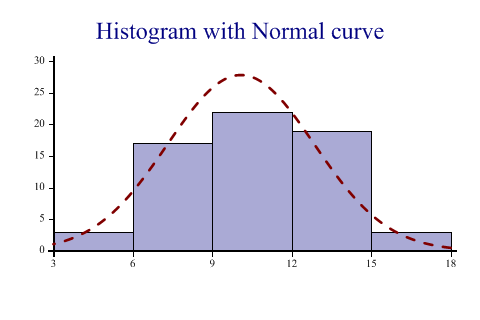
SharpPlot sp = new SharpPlot; sp.Heading = "Histogram with Normal curve"; sp.HistogramStyle = HistogramStyles.SurfaceShading|HistogramStyles.Risers| HistogramStyles.NormalCurve; sp.SetFillStyles(FillStyle.Halftone); sp.SetPenWidths(2); sp.SetXRange(3,18); sp.ClassInterval = 3; sp.SetXTickMarks(3); sp.DrawHistogram(threedice);
Worked Examples
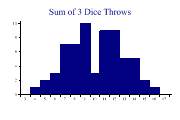 |
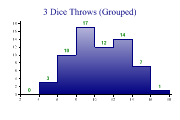 |
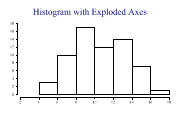 |
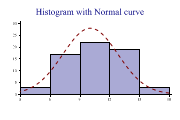 |